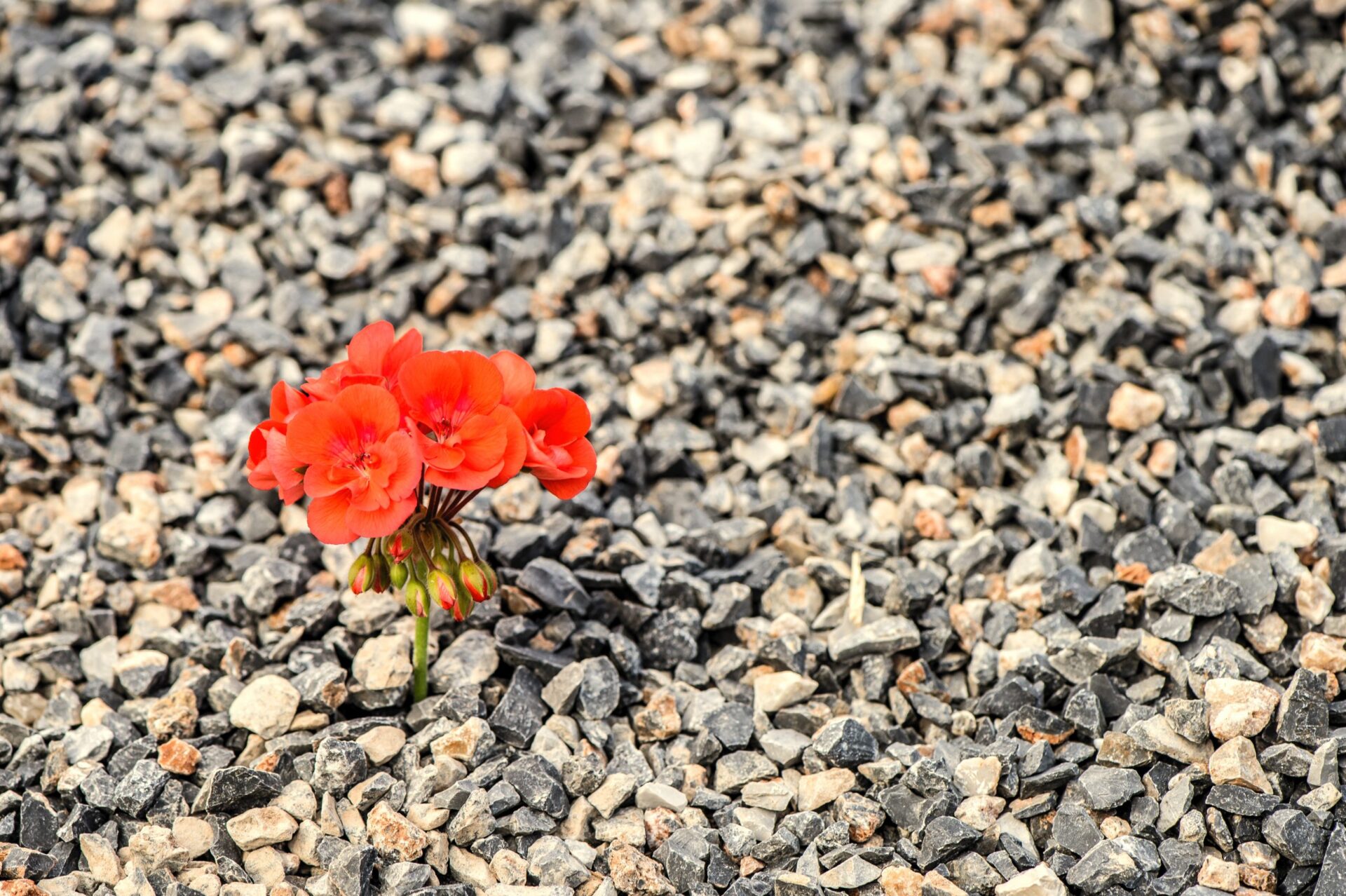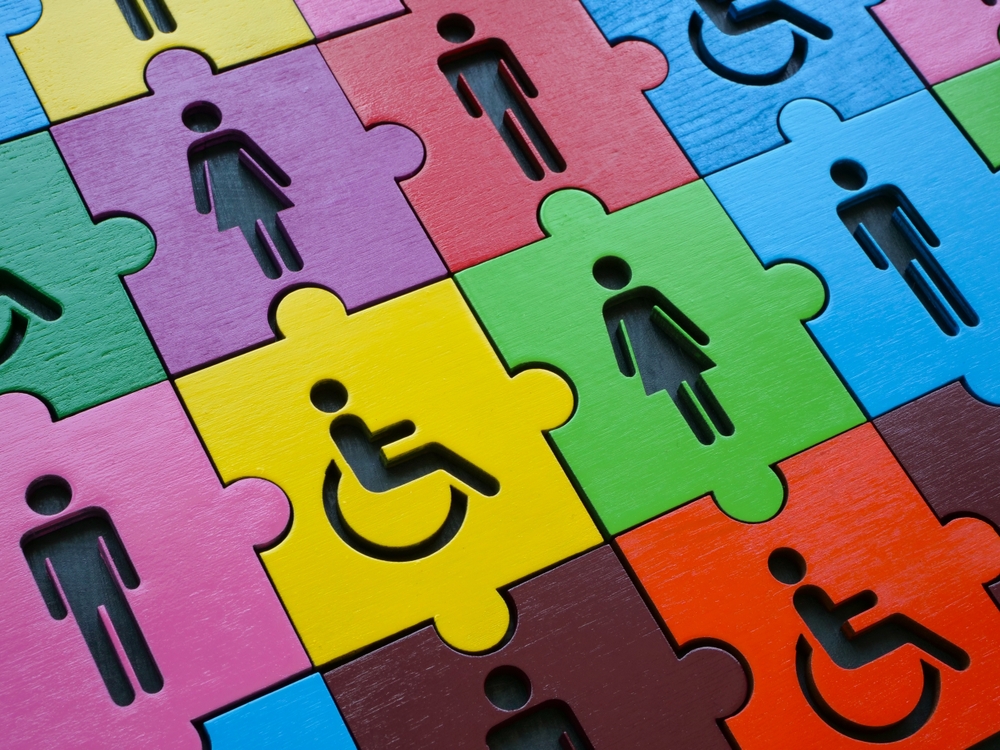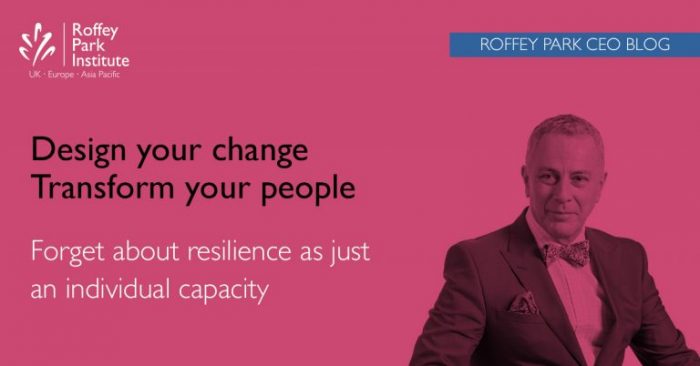
How do you support your staff and your organisation to create resilience in people and structures?
Resilience in the workplace is more important than ever because of coronavirus: learn how to evaluate and strengthen your organisation’s culture.
Covid-19 has brought new challenges to the workplace, highlighting the importance of resilience and wellbeing, refocusing how we think about scenario planning, and insisting we consider the future. In this short interview series Roffey Park CEO, Dr Robert Coles, shares his insights into how organisations and their employees will be affected by the coronavirus crisis, and how they should respond.
Here, he looks at resilience: what resilience means, developing resilience, stress and resilience, how to build resilience at work and in teams.
What do you mean by resilience?
“Well…there are 1001 definitions: that’s part of its problem. What we’d refer to as resilience at Roffey Park is the capacity to flex with challenges and maintain a balance between an emotional state and a rational state when dealing with challenges, but critically to do so through and with others. So, one of the things we strongly stand against is the concept of individual resilience as a characteristic. I don’t think that exists: we get our resilience from and through the way we respond emotionally and rationally to situations and to others.
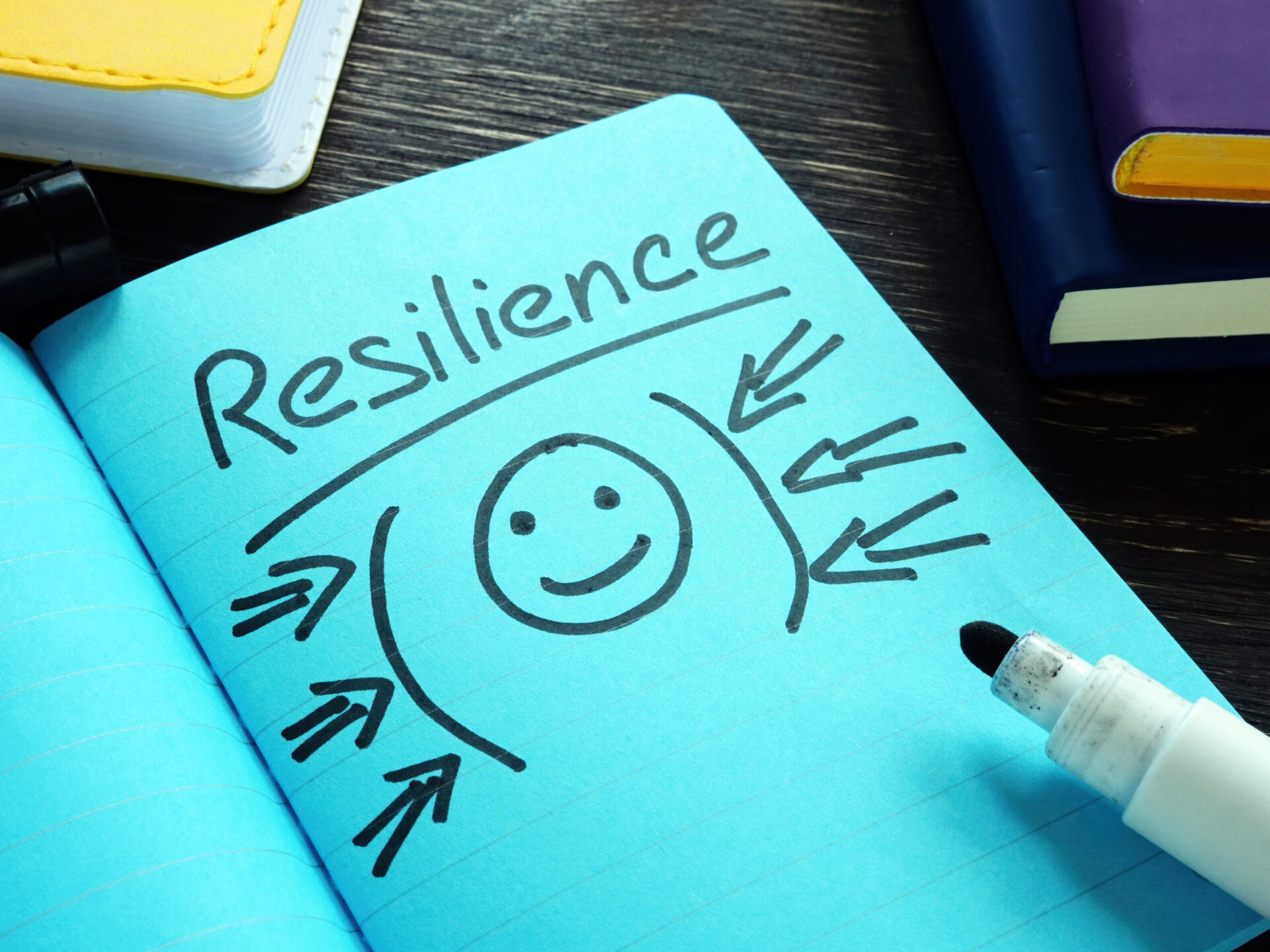
“When schools talk about developing resilience in children, I think that’s potentially a false concept if seen through the lens of individualism. Where children get their resilience from as much as anything else is how they’re taught to respond to things by their parents and wider social networks. You see this with children: they come from the same family but often display different levels of social and emotional resilience, often because the way they’ve been responded to has been different as well. We understand resilience as a collective phenomenon, not a personal one.”
So being resilient at work isn’t about individuals?
“This is part of the problem of resilience in many ways. There’s almost nothing more abusive you can say to someone who’s already in trouble, already upset, stressed and distressed than, you don’t have enough resilience. But it is often said.
“We all have varying levels of tolerance of ambiguity and risk but that’s not resilience: those things are characteristic, often cultured, gendered and change with age. To accuse somebody of not having enough resilience per se, whatever that is, is a silly thing to do but in these days of over-measurement that is what people are resorting to. And some of the basic assumptions underpinning this measure and assess obsession are plain wrong.”
And how to build resilience at work? How do you build resilience in teams?
“Again, you go back to the principle of things arising out of groups and discussions. So if you have in any organisation or social group an atmosphere of experimentation, exploration and encouragement, then lo and behold, when people come across the unknown they will respond positively and with curiosity because they have been taught to do so. In a time of crisis, it is these learned behaviours which are exposed, for good or ill.

“So the answers to resilience in organisations therefore lie as much outside them as within. If you’ve been taught positive ways of thinking and framing problems or situations, you’ll bring that framing to work. On the other hand, if you’ve been discouraged, limited and protected – as children are often overprotected in the modern world – then by the time you’re an adult you may have little tolerance of ambiguity and uncertainty, a key element of resilience.
“Then we come across challenges, conflicts or problems in our work or personal lives, and we don’t have the innate social resilience to deal with them. Many organisations recognise this lack of problem solving capacity in recent generations of school and university leavers, running programmes to encourage the social resilience new employees need.
“We need all our people to understand the uses of power, of collaboration, of decision-making and problem-solving methods. The more collaborative our methods are, the more effective they are; and the more effective they are the more resilient they are.”
Find out more: Five tips for leaders on how to improve collaboration in their teams.
How would you know if there wasn’t enough resilience and wellbeing in the workplace?
“Resilience isn’t a thing – that’s the problem. You can’t operate on it under anaesthetic. It’s an outcome of social interaction so the things you look for are, invisible, cultural. What are practices of decision making, delegation, dialogue and discussion? How do they work to the benefit or otherwise of participants? What happens to these things under pressure? This will tell you how resilient your organisation is.
“One way of looking at this is through so-called ‘strong cultures’ in organisations. Strong cultures promote narrow, mono-method ways of doing things. This is fine as long as that way works, but if that way ceases to work, organisations with strong cultures tend to lack resilience, because they don’t know how to deal with things that aren’t as they should be.
“So a good sign of resilience is that an organisation has what is known as a weak culture – it’s open to outside influence, it’s open to alternatives, it has lots of different ways of approaching things and it’s therefore a lot more adaptable.
“That’s probably one of the best signs of resilience. The stronger the culture, the more resistant to external influence, the lower the level of potential resilience, put it that way.”
So if building resilience in the workplace and building team resilience is something you need to do, how would you evaluate the resilience of your structure now? How can you look at resilience and stress?
“You need to ask the right questions and find better ways of listening to the answers; especially answers you don’t like. Senior leaders all too quickly lose the capacity to listen to any other narrative than their own.
“You need to develop some inclusive ways of finding things out. Often organisations have developed impersonal, system level mechanisms of listening – my favourite baddie, the survey! Rather than talking with people and hearing the difficult things, we indulge in engagement surveys and pulse surveys which produce data without quality – just responses to previously prescribed questions.
“Organisations need to move away from predesigned views of what they want to know. Get rid of surveys, get rid of pulses and engagement tools. Sit down and talk to people! Be willing to hear responses you don’t necessarily want to hear and to ask questions that aren’t the obvious. And to hear wisdom you may not have. This is where it can help to use outside facilitation, to break the cultural trap.
“Much of this is simple good practice around listening and adapting, being aware of minority voices. To return to the issue of strong culture – if an organisation has a set of values, behaviours and cultural norms, often sitting alongside these things is a diversity policy which is a complete contradiction to all the other policies. In truth organisations are not that diverse, certainly not in cognitive terms. They tend to think in a certain way, so we need to enable and encourage alternative voices, alternative opinions and perspectives. Lean and listen: that’s the key function of building resilience.”
So developing resilience at work isn’t going to be a quick process…
“One of the problems with resilience is people think it’s a thing you can command. It isn’t: it is an outcome of the things you do and the ways you behave. Resilience doesn’t exist as a thing, you can’t pick it up.

“Resilience is the outcome of your cultural practices. These take effort to build and yet more effort to change.
“This is the lesson of the day in many ways. Many questions online at the moment are along the lines of: How do I build resilience? How do I get resilience? How do I get people more resilient? These are all the wrong questions.
“The right questions are: what are the practices in my organisation and do they promote a resilient outcome? Or do they promote a narrow, single-method way of dealing with things? Do they maximise or limit potential for hearing other people, adopting other methods or hearing minority voices? What are the enablers of voice in my organisation? Do I enable other voices? When and how do we tell people to shut-up?
“Structure and culture determine the answer to these questions, that’s what people have to bear in mind.”
When it comes to resilience, do you find the organisations with more open cultures deal better with the current situation?
“Yes, they tend to. Engagement is key here, not through the process method of by survey or by data but by extensive and inclusive dialogue. So few organisations do this well.
“Among those that so, they are finding that the more inclusive, diverse and federalised their means of discussing and solving and resolving things, the more resilient the organisation, and the individuals within, tend to be.
“Conversely, the more command and control or monocultural an organisation, the fewer skills people develop. Why would they? We develop skills of compliance in strong cultures and of exploration in weak cultures and there’s a distinct difference in the nature of resilience.”
How could organisations move away from the data-collection approach with staff and towards building more team resilience?
“An organisation is a relational network, connected through formal and informal structures, habits of mind.

“In a hard system people have to fit into that as a structure. When that system confronts something it can’t deal with, something outside the norm, it has relatively limited capacity to flex with it.
“If you see an organisation as a sentient network of relationships, that’s different. Those relationships develop energy, reliance upon each other, knowing who to go to, when to go to, where to go to. The great feature of a resilient organisation is they tend to adapt very fast to the world and situation around them.
“Adaptiveness is a really nice sign of resilience at an organisational level and it depends on whether you understand the organisation as ‘a system for people to fit into’ or ‘an organic ecosystem of people, relationships and capacities to communicate’. If you think it’s the latter, and you behave that way, you’ll get a resilient organisation.”
Find out more: The Adaptive Challenge of Covid-19
Is it possible to build a resilient workplace?
“It is totally possible to build a resilient workplace! It’s an issue of practice. I’ve worked around the world and it’s interesting how cultural these things are.
“In many Asian countries, compliance has been a key tool of economic success. But in the post-digital world, where a lot of the compliant or predictable activities have already been or will be automated, having social compliance in your human workforce is becoming less useful.
“Now you want creativity, energy, imagination. All these things are indicators of resilience rather than compliance. Compliant people aren’t resilient when the situation around them becomes non-compliant. However, the people who are imaginative, creative and socially-connected can deal with just about every situation.”
“It is entirely possible to build and sustain creative, sustained resilience.”
What about resilience in leadership? Do leaders need to start thinking in a different way?
“The implicit assumption in that question is that leaders know better in the first place. What leaders need to do – rather than sit down and talk to themselves first – is de-centre themselves and talk to others.
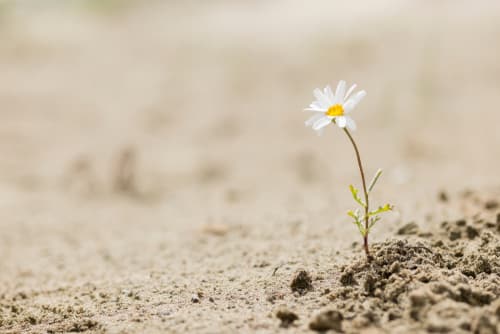
“Many leaders frankly don’t have exceptional skills in this sense – quite the opposite, their relational skills are often limited. What they need to do is stop being leaders and instead have good open honest dialogues with the people they lead and manage. In doing so these dialogues will generate a different kind of leadership. One that is collectively generated rather than held by one person, where there is a personal and collective sense of accountability and support. Leaders don’t need to go into splendid isolation while they work out how to be leaders. Just be people and talk with other people.”
How do we go about developing resilience in the workplace?
“In any current crisis, organisations and the people within them are the same things in the end. We need to listen really hard to each other.
“Our individual life experience is both individual and isolated right now, but amazingly common also. You hear of people spending more and more screen time talking but at the same time feeling ever more isolated. Connected in solitude is life in the lockdown.”
Find out more: OD and connection in a virtual world
“So, we have to talk to each other and listen well, and, from that starting point, rebuild an understanding of what we really value in working together. A lot of what people value is simple: it’s the informal conversations, expressions of support, informal advice, listening to problems. None of this is hierarchical or structural.
“Next, We must redesign organisations to reflect the needs and opportunities we uncover. We have to think about what we stand for, how we work and how we maximise the collective human value of our people. In our old world, we processed our human workforce, but we didn’t maximise their self-worth or help them flourish. That’s what organisations need to do in the future.”
Find out more: Communication and trust during change
How do resilience and wellbeing in the workplace fit together? What about stress and resilience?
“Resilience and wellbeing are interconnected, and it’s perfectly conceivable that as people unwind from this situation there will be a lot of withheld stress that will start to wind its way out. Back in the 1940s and 1950s,Roffey Park had hundreds of visits a year from institutions wanting to see our pioneering work around mental distress and PTSD.
“Primarily what we did was to say to an individual: don’t be an individual about this. Be collective, talk to each other. Conversation therapy, group activity therapy – everything that underpins the Roffey Park philosophy of learning and change and self-realisation was to do with groups not individuals.
“It was to do with the sense of collectivity the individual acquires out of the social group they are in, how they are influenced by that group, supported and enabled by that group. Sitting down with an individual saying ‘let’s deal with your stress’ is not very helpful but, if we can reconnect that individual with another, the power of collective help is far greater than anything an individual can achieve for themselves.”
So collective action will be vital for building resilience in teams as we come out of this crisis…
“Totally. We will need to offer people time and space to express how tough it’s been.. What we need to accept is that, if I have a problem it’s not my problem to fix on my own. Rather, it’s a problem other people can help with. Collectively we can find ways of helping each other overcome most things. If organisations can encourage and embed these collaborative, cultural human mechanisms, then both they and their people will recover their resilience, effectiveness and momentum that much faster.”
Roffey Park provides many of its regular organisation development, leadership, management and facilitation programmes digitally to help you and your organisation develop a new level of resilience.

